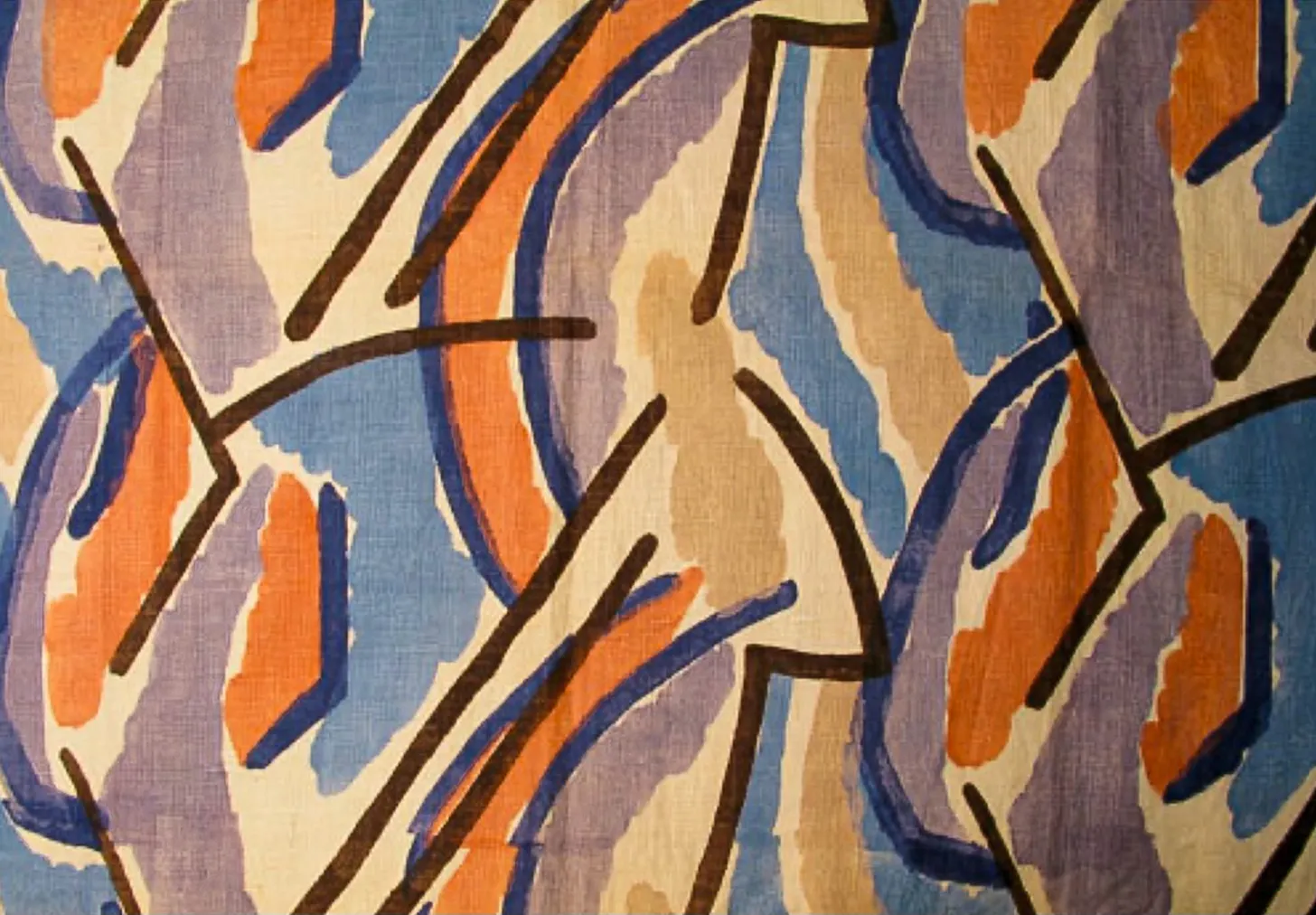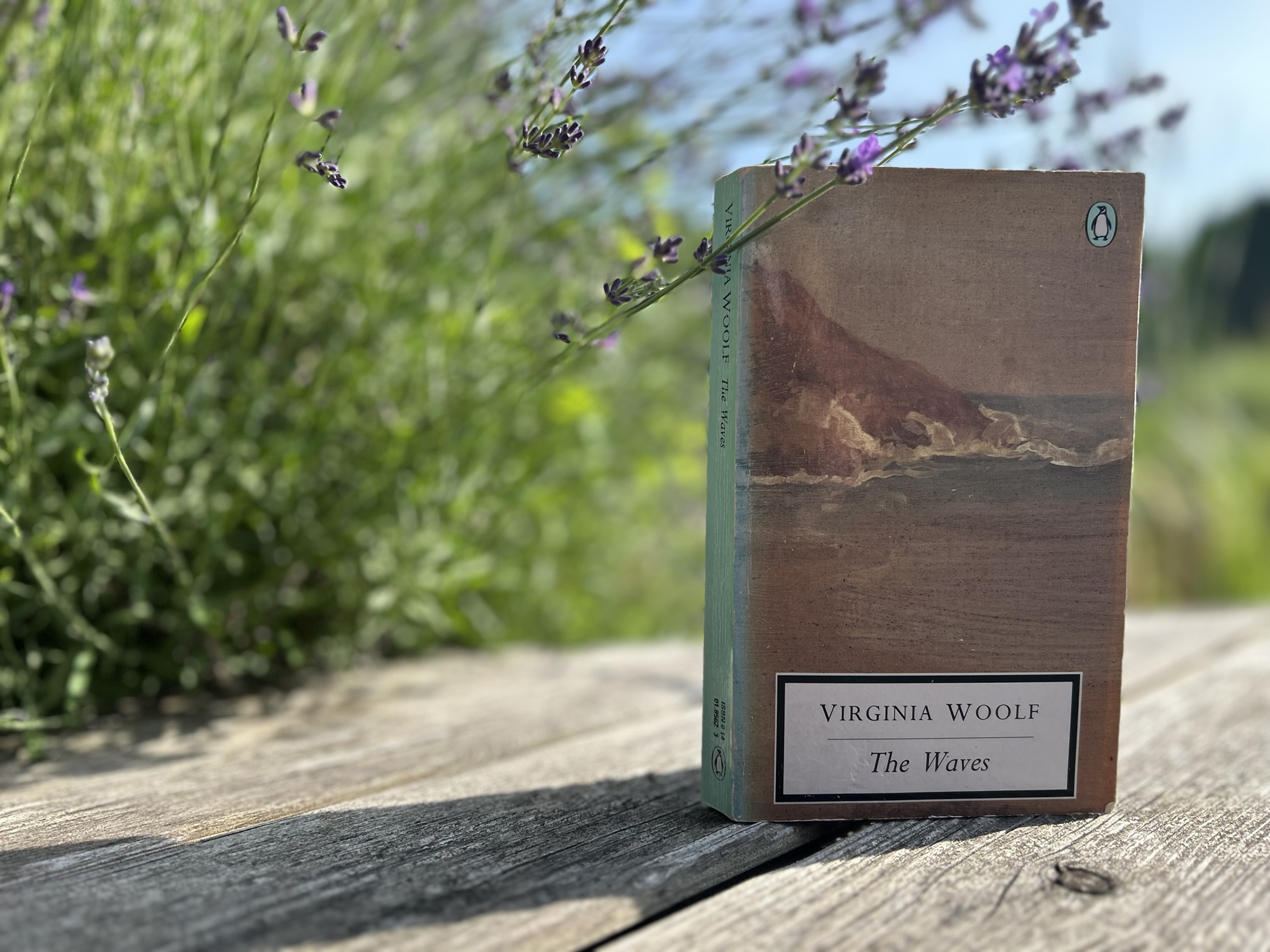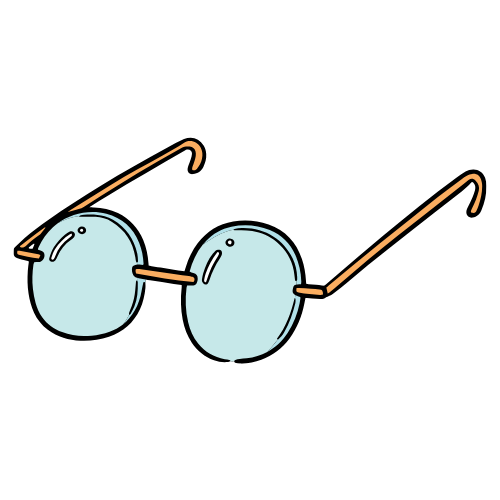It is, though. The Waves, that is. The Waves really is Virginia Woolf’s most challenging novel, everyone agrees. Especially the participants in the Literature Cambridge Virginia Woolf summer course, where everyone has a Virginia Woolf favourite and an opinion of The Waves. Talking to people, it becomes clear that almost everybody favours either Mrs Dalloway or To the Lighthouse. Yet the atmosphere really charges with excitement when the discussion turns towards The Waves (and its plot). Virginia Woolf raises the stakes here. She removes almost everything recognisable, narrator and plot, and leaves us with pure voice, rhythm, and pattern, and is herself surprised that “it is selling beyond all my other books”. No wonder, I think. We, her common readers of a hundred years later, just as her readers of the 30s, love a good challenge.
Maybe that’s why so many readers bought the book back then and that’s why it generates so much excitement in the Woolfian discussion groups: it doesn’t feel like a novel which wants something from you. It doesn’t want you to interpret it, it doesn’t want to symbolize something, it doesn’t even want to mean something. It just asks to be read. But that’s how it feels like if you read the novel. If you haven’t read it, you might just wonder: after the experiments with narrative form which were Mrs Dalloway and To the Lighthouse, what will Woolf come up with next? Looking at the three novels as three beads on a string of silk, together they dismantle the traditional narrative form. Mrs Dalloway might still onto a clear setting and event, a single June day and a party wrapped around the interior lives of countless people. To the Lighthouse gradually unsettles that ground, breaking time itself open and pulling attention toward a larger universal presence. The Waves pushes further, stripping away even these anchors and leaving us only with language itself, expanded to the limits of the knowable human soul.
the trilogy ending with The Waves
Virginia Woolf published The Waves in 1931, 4 years after To the Lighthouse. During these years she published, among others, Orlando and A Room of One’s Own. The former, a biography which places woman out of time and gender, but which reveals the absurdity of the social conditions she is to live by. The latter, an essay on the history of women’s writing which circles back to the necessity of an androginous mind as a prime condition for writing. The Waves follows onto this new direction in Woolf’s writing. She gradually drops the thread of a luminous individual consciousness and starts looking at the world this consciousness lives in and the relationships it forms outside itself. This is quite the departure from her two famous novels, but it’s by no means a sudden one.
In Mrs Dalloway, the social fabric is visible in every street crossing and every party guest; Clarissa’s sense of self is inseparable from it, and we sense her understating of it from within her consciousness. To the Lighthouse takes the attention away from the city life and sets it against the backdrop of family life, the pressures of domestic roles, and the absences created by death and war. The context is wider, especially when reading the very cold and impersonal remarks telling us of the deaths of Mrs Ramsay, Andrew and Prue. Then The Waves comes along and strengthens the presence of both the social markers, and of an impersonal entity as seen from the outside. Her previous two novels were narrated by a narrator who lets herself possessed by the characters, but The Waves is, strictly speaking, simple reported speech. So-and-so, said Bernard. So-and-so, said Susan. Its six voices grow up together, pass through schools, jobs, relationships, yet what remains is not their historical biography but the cadence of their inner lives, speaking against and with one another. All while the looming waves break on the shore.
Books always leave more to uncover. Subscribe to get more reflections and interpretations delivered by email.
interwoven characters
I wrote in a previous post on Mrs Dalloway about Woolf’s method of building character, her “tunnelling” method as she called it. In this novel, the characters go about their day in London, while their memories are catching up with them and dragging them down the tunnel of their own past. A walk through St James’ Park, the chime of Big Ben, each detail is a trigger for an interior descent that reveals the weight of the years beneath the surface of the present. In To the Lighthouse, I think the tunnelling gains a more concrete meaning. Mrs Ramsay is defined by what she perceived and reflects on, but especially by how she is seen and remembered by Lily, by Cam, by William Bankes, by how she echoes in absence as much as in presence. The “Time Passes” section is the physical tunnel here, flying us through the darkness of 10 yeas without a breath of human life from one present time to another.
In The Waves Virginia Woolf turns away entirely from narrative voice which stiches the characters together. The six characters are no longer distinct portraits set against a social world but interwoven voices, each falling into thought the moment it arises. Character here is not a self uncovered and created by digging, looking and remembering, but a rhythm of consciousness that gains meaning only in relation to the others. The tunnel is no longer a tunnel, but, not at all surprising, a wave washing on a shore, a choir of voices which can only exist in their common flow. Take for example a scene at the beginning. Jinny, Rhoda and Susan go to an all-girls school, and at one point they find themselves on the stairs in front of a mirror. Jinny is preoccupied by how she looks like, Susan thinks back on her father and her life on the farm, and Rhoda feels the mirror cannot contain her. The three girls look into the mirror together, and each one sees herself in relation to the other two.
I hate the small looking-glass on the stairs, said Jinny. It shows our heads only; it cuts off our heads. And my lips are too wide, and my eyes are too close together; I show my gums too much when I laugh […] so I skip up the stairs past them, to the next landing, where the long glass hangs and I see myself entire […] I flicker between the set face of Susan and Rhoda’s vagueness.
for there they are
“For there she was.” This is how Mrs Dalloway ends. At the close of Clarissa’s party Peter is overwhelmed by a feeling of affection but doesn’t immediately realize its source. Then he recognizes Clarissa coming down the stairs, her being and presence. “There she sat” says Lily of Mrs Ramsay when she suddenly senses her presence, though Mrs Ramsay is long gone. More than a memory, more than a feeling, she sees a vision of Mrs Ramsay, in her wholeness, woman stripped of all her social roles and responsibilities. Mrs Dalloway holds fast to the individual consciousness, while To the Lighthouse allows a feeling of impersonality through the relentless passing of time.
With The Waves, the shift is complete. “There I sat”. This is the only real thing Bernard can say of himself towards the end of his long monologue in the final episode of the novel. This doesn’t read like a confirmation of his presence, but more like a defeat in his attempts to find himself in the dissolving wave which are his memories and the personalities of his 5 friends. Their bonds are private and personal but also shaped by repetition and the echo which sounds again and again across their soliloquies. The voices affirm and contest one another, but can’t and don’t know themselves as distinct selves. Instead, they build themselves in patterns that belongs as much to the cadence of the sea as to collective memory. The novel refuses to end with the affirmation of presence. It ends instead in Bernard’s recognition that identity itself is porous, that “I do not altogether know who I am”.
I to whom there is not beauty enough in moon or tree; to whom the touch of one person with another is all, yet who cannot grasp even that, who am so imperfect, so weak, so unspeakably lonely. There I sat.
So what did Virginia Woolf write with The Waves? Like a poem, I can read a page here, one there and try to integrate it in my life. Like a play, I can hear disparate voices talking to and against each other. Having it read twice now, I feel like Bernard, sinking in a chair, sitting with all these restless thoughts inside my head and finding it hard to reach a conclusion. All I know is that I do not know. It’s easy to make observations, to notice the shift in Woolf’s way of creating character and the increasingly louder sound of the waves throughout her prose. But the novel remains, for me at least, a challenge to grasp as a whole. A challenge maybe overcome by future rereadings.
I wrote this post after the Literature Cambridge 2025 Virginia Woolf summer school. The series of lectures and seminars focused on life writing in five of Woolf’s works.







your thoughts?